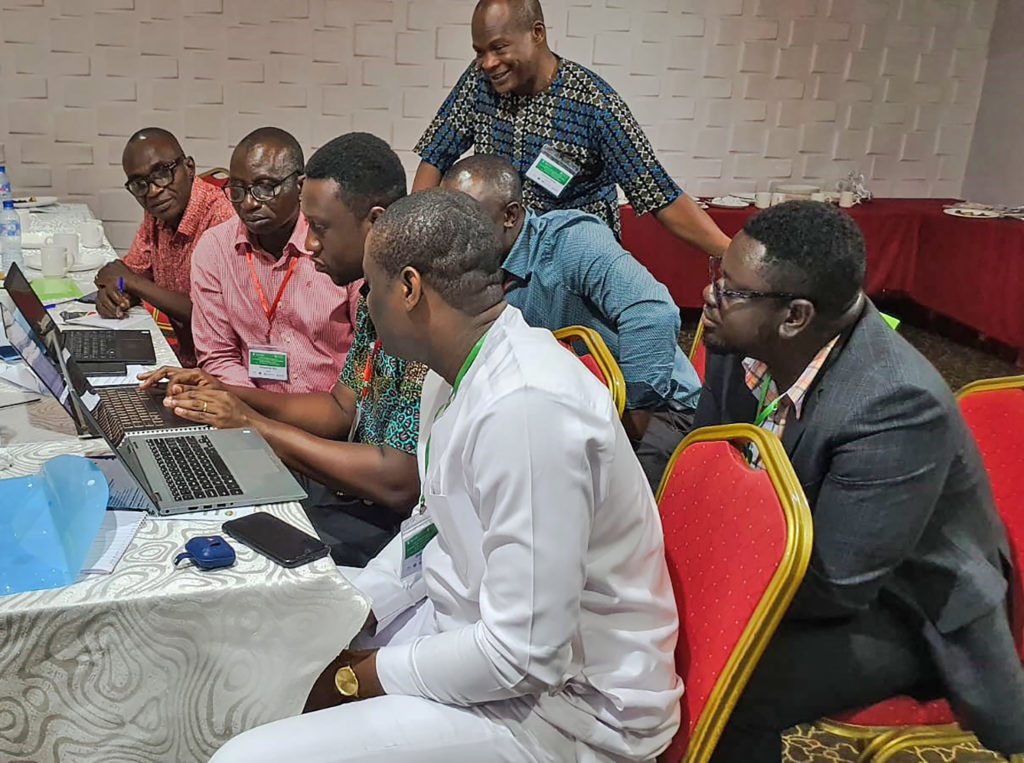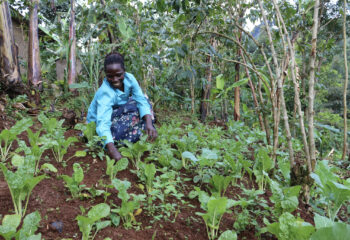
This article was originally featured on Argus Media’s Fertilizer Focus May/June 2024 publication.
Argus Media is the leading independent provider of market intelligence to the global energy and commodity markets, offering essential price assessments, news, analytics, consulting services, data science tools, and industry conferences to illuminate complex and opaque commodity markets.
Follow Argus Media on Social Media.
Written by Sebastian Nduva, Lead, Africa Fertilizer; Fred Gyasi, Deputy Program Manager, Africa Fertilizer; Ousmane Kone, VIFAA program manager, Development Gateway; and Scott Wallace, CEO, Wallace & Associate.
Moving from the Kg/Ha indicator to more comprehensive datasets
The average fertilizer usage in Africa has seen a rise from 8.0 Kg/Ha in 2006 to a peak of 42.5 Kg/Ha in 2019, followed by a downward trend to settle at 34.5 Kg/Ha in 2022 amid the recent fertilizer crisis with rising prices and limited availability. When looking at the positive increase in fertilizer use over the past decade, the goal of 50 Kg/Ha, as stated in the Abuja Declaration signed during the first Africa Fertilizer Summit in 2006, seems within reach. However, when looking at country usage, the differences are huge. For example, data recorded for 2020 shows an average of 401.2 Kg/Ha for Egypt, 5.6 Kg/Ha for Guinea, 14.4 Kg/Ha for Tanzania, and 79.0 Kg/Ha for Zambia.
National averages can be deceptive though, because they do not give any information on the geography or crop use and product versus nutrient content. To get the full picture of what is happening in the fertilizer sector, we need to look beyond fertilizer consumption in Kg/Ha, which has been regarded since 2006 as the indicator of all indicators. Since 2009, the International Fertilizer Development Center (IFDC) and partners have been tracking 18 fertilizer markets using different indicators. The collected data provide a wealth of information for policy makers and the private sector and gives a much more complete picture than the Kg/Ha indicator. Let us have a look at what has been done so far, what actual progress has been made, and why continuous data collection is needed from all African countries.
The indicator of all indicators
The Abuja Declaration of 2006 established kilogrammes per hectare (Kg/Ha) as the primary indicator to measure progress in the fertilizer sector across African Union Commission (AUC) Member States. This indicator, also known as National Average Fertilizer Consumption, offers insight into a country’s fertilizer usage and its impact on soil health and agricultural productivity. However, collecting accurate data for both the numerator (total fertilizer consumed) and denominator (arable land utilized) presents challenges. Even with precise data, the Kg/Ha indicator alone doesn’t provide a comprehensive understanding of the fertilizer sector.
Determining the numerator (total fertilizer consumed) presents its own complexities. When discussing fertilizer, do we refer to the entire product or its nutrient content? For instance, a 50 kg bag of fertilizer might contain a much smaller weight of nutrients. Consider NPK15-15-15, which signifies 15% each of nitrogen (N), phosphorus (P), and potassium (K), totaling 45%. While the bag weighs 50 kg, the nutrient content is only 45% of this weight, equating to 22.5 kg. Therefore, accurately assessing fertilizer consumption requires distinguishing between total product weight and nutrient content.
Even if we agree to use the nutrient content, a second issue presents itself. Since it is not feasible to carry out extensive farmer surveys on previous seasons’ consumption, we need to rely on other sources to get an idea of the national fertilizer consumption. To get an accurate number, we need to look at how much fertilizer was produced domestically, how much was imported, how much was exported, how much was consumed during the year, as well as the amount that was held in storage for the next farming season. Another critical missing piece would be fertilizer traded through informal channels across borders. In most instances there is no way to capture this. Where the above data exists, at best, it is highly disaggregated; the government, fertilizer manufacturers, importers, distributors, customs, revenue authorities, plantations, and cooperatives all have a piece of the information. Thus, fertilizer consumption data must be triangulated and validated from multiple sources.
Determining the denominator for arable land utilization faces many challenges
On the other hand, determining the denominator (Ha) for arable land utilization faces several challenges. These include confusion between hectare and acre measurements and farmers’ lack of knowledge about their land size. Additionally, the term ‘arable’ excludes perennial crops like cocoa and fruit trees, further complicating data collection. While the indicator may seem straightforward, its interpretation and data collection present significant complexities.
The importance of accurate and complete data
Why is it so important to have accurate data, and why is a rough estimate of Kg/Ha not enough? A first reason can be found by simply looking at the metric. In most regions of the world, the average Kg/Ha is in the triple digits. For example, in 2021, according to the World Bank, the average fertilizer use for The Netherlands is 274.4 Kg/Ha, for Brazil 369.5 Kg/Ha, India 193.2 Kg/Ha, and 128.7 Kg/Ha for the US. However, the average Kg/Ha indicator in most sub-Saharan countries does not reach above levels. In 2020, only Egypt and Mauritius recorded an average use of triple digits, while Central African Republic, DRC, The Gambia, Namibia, and Niger all remained under the 5 Kg/Ha. If the accuracy is off by 4 or 5 Kg/Ha, this will have little relative impact for most of the world. However, in sub-Saharan Africa, such an error rate translates to significant impact.
Accurate data is crucial for various stakeholders, including both the public and private sectors in Africa fertilizer markets. Governments, as major buyers, rely on data to ensure food security by avoiding fertilizer supply shortages and agricultural production shortfalls. Reliable data enables tracking progress against fertilizer goals and adjusting policies accordingly. For the private sector, accurate information is vital for planning procurement and imports for the upcoming season. Data inaccuracies can lead to over-supply, storage challenges, or under-supply, impacting yields and threatening farmers’ livelihoods and food security. Additionally, incorrect data can result in delayed procurement decisions, affecting timeliness in some African countries.
Fertilizer demand and distribution
Even with accurate Kg/Ha data, the indicator falls short of providing a comprehensive view of the national fertilizer sector. While it offers insight into fertilizer consumption, it doesn’t capture demand or distribution patterns. Achieving a target of 50 Kg/Ha may not necessarily meet the actual fertilizer demand, which could be higher. Moreover, disparities in usage across regions or crops can skew the average, masking potential shortfalls or inefficiencies. Without information on geographical and crop specific distribution, both the public and private sectors face challenges in identifying unmet demand and strategizing effectively. A lack of a complete picture hampers planning and decision-making efforts.

The importance of having a complete picture extends beyond the national level to the regional level, as recent events, such as the fertilizer shortage due to the conflict in Ukraine, have underscored the interconnectedness of global markets. In Africa, where some countries are fertilizer manufacturers and others have untapped production potential, understanding regional demand is crucial for attracting investment. Investors need assurance of demand not only in existing markets but also in regions with low fertilizer usage. A comprehensive understanding of regional dynamics enables stakeholders to unlock market potential and promote sustainable growth across the continent.
A more complete dataset
Does that mean that the Kg/Ha indicator is completely useless, and we should no longer use it? Not at all; The Kg/Ha indicator remains valuable, but its definition needs clarification. While it provides a useful snapshot of national fertilizer consumption, relying solely on this indicator is insufficient for gaining a comprehensive understanding of the fertilizer sector. To make informed decisions, we require a broader range of fertilizer statistics at the country level, including production, trade, distribution, prices, production capacities, and crop-specific fertilizer use. Moreover, data collection efforts must encompass all African countries to ensure inclusivity and accuracy. While acknowledging the benefits of more extensive data, we must also recognize the challenges involved in collecting it. Balancing the need for comprehensive information with practical data collection methods is essential for effective decision-making in the fertilizer sector.
In 2009, IFDC, in conjunction with the International Fertilizer Association (IFA), started the AfricaFertilizer initiative to address gaps in fertilizer data on availability and market information in sub-Saharan Africa as part of the effort to increase fertilizer nutrient use to 50Kg/Ha. In 2019, AfricaFertilizer joined forces with Development Gateway: An IREX Venture with Wallace & Associates under a programme dubbed Visualizing Insights on Fertilizer for African Agriculture (VIFAA), funded by the Bill & Melinda Gates Foundation. The partnership has been crucial in ensuring that data from both the public and private sector are brought forward and reliably sourced.
Data collection is costly and takes lots of efforts from different stakeholders
In November 2022, AfricaFertilizer launched a harmonised web-based platform (www.AfricaFertilizer.org) which integrates country-specific dashboards as well as fertilizer data on trade, production, consumption, and retail prices for 18 countries across sub-Saharan Africa. The new data allows for easier comparative analysis across countries. Users in the public sector use the data to track progress against fertilizer goals or adjust policies and create incentives for actors in the supply chain as needed. The private sector applies this information to better plan procurement and imports for the next agricultural season. The data analytics behind these dashboards is collected through a Fertilizer Technical Working Group (FTWG), convened and hosted by IFDC.
The way forward
Data collection is costly and takes lots of efforts from different stakeholders. The efforts by AfricaFertilizer is a major step in the right direction, but we are not there yet. Data can change overnight which means that data collection work is never finished. Moreover, at the moment, the web based platforms depict data from 18 sub-Saharan African countries only, as can be seen in the map below.
Data is needed from other countries in the region to unlock any potential demand and raise the interest of the private sector to invest in supplying and distributing fertilizers to those countries. Data from additional countries can help to align policies across the region and identify possibilities for domestic fertilizer production. Using the Kg/Ha indicator was a nice start, but it is not the silver bullet to develop the fertilizer sector and ensure food security. It is time to move to a more comprehensive set of data, and not just from a few countries, but from every country in sub-Saharan Africa.
Using a comprehensive data set in practice: The case of Kenya and DRC
To understand the need for a complete dataset, let’s look at some data of Kenya and the Democratic Republic of Congo (DRC). Data from Kenya shows that fertilizer consumption has slowly increased over the past decade with peaks in 2013 and 2017 (see figure 2).

The same graph for DRC, a country four times the size of Kenya, looks completely different, as can be seen in figure 3.

In DRC, the fertilizer consumption remains under the 2 Kg/Ha. Any margin of error, even of half a kilo, has large implications for the indicator. Therefore, the data cannot provide adequate information to inform and support decision makers (both private and public). In addition, Kenya has data indicating that 80% of fertilizers are used for food crops and 20% for cash crops. This will help the Government of Kenya to make decisions with regards to food security and/or export of crops. For DRC, that data is not available. Kenya also has data on fertilizer prices, fertilizer use per crop, quantities imported, the number of importers, and distribution of fertilizers. Kenya historically has supported agriculture data which allows for more informed decision making for all.




